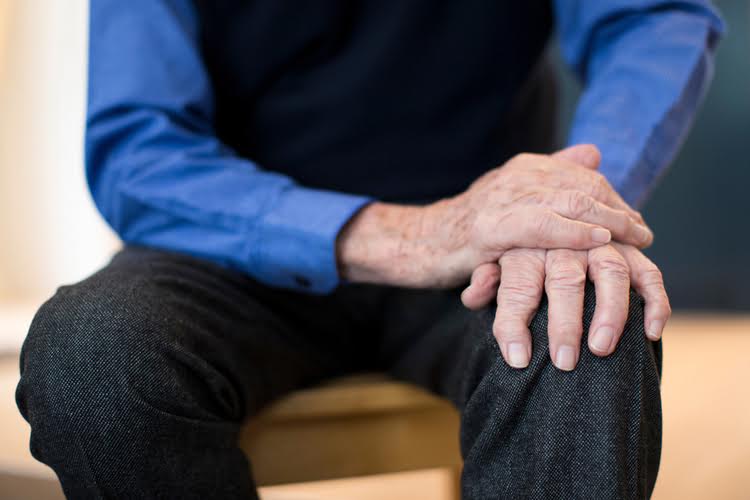Contents
Second, there are doubts about the long-term effectiveness of aversion therapy. However, it is often much less effective in the outside world, where no nausea-inducing drug has been taken and it is obvious that no shocks will be given. Aversion therapy has been proven successful in some cases of treating habitual behaviors. For example, a treatment center in Seattle called Shick-Shadel uses aversion therapy to help patients quit smoking.

However, evidence showed that this “treatment” was both ineffective and harmful. It’s believed that the lack of long-term benefit occurs because most aversion therapy happens in-office. While the previously mentioned study found that 69 percent of participants reported sobriety 1 year after treatment, a longer-term study would help to see if it lasted past that first year.
Other treatment options
As with CBT, aversion therapy is based on the principle that behaviors are learned and can be unlearned. The type of behavior to be corrected also plays a role in the effectiveness of aversion therapy, as it tends to be more effective with some behaviors than others. The stimulus used in therapy is another factor, as the use of electric shocks tends to be less effective than the use of nausea-inducing chemicals. For behavioral addiction such as gambling aversion therapy involves associating such stimuli and behavior with a very unpleasant unconditioned stimulus, such as an electric shock. It involves administering an electrical shock to the patient’s arm, leg or even genitals every time the person engages in the unwanted behavior. Faradic therapy is one form in which shocks are administered to muscles.

Lever pressing was reinforced on a variable-interval 30-s schedule in rats, with lever height manipulated across six successive conditions. Parameters of the organization of responses in bouts (bout length distribution, bout-initiation rate, within-bout rate, and sequential dependency) were estimated. In accordance with previous data, these findings suggest that lower and intermediate lever heights favored lever pressing with longer bout lengths, faster bout initiation, faster within-bout responding, and more sequentially dependent timing.
Human classical aversion conditioning: nausea versus electric shock in the reduction of target beverage consumption
Mechanisms of inflammation have been implicated in the pathogenesis of aortic stenosis. When stimulated, human aortic valve interstitial cells have been shown to become inflammatory cells. Increased levels of interleukin -1β have been found in the leaflets of stenotic aortic valves. The purpose of this study was to determine the effects of IL-1β on isolated human AVICs and to determine the intracellular signaling pathway by which the effects are mediated. The results of this study demonstrated that IL-1β induces an inflammatory phenotype in human AVICs. The effect of lever height on the temporal organization of reinforced lever pressing was examined.
Can you cook with wine on Antabuse?
You should not use Antabuse if you have recently taken metronidazole or paraldehyde, or if you have consumed any foods or products that contain alcohol (mouthwash, cough medicine, cooking wine or vinegar, certain desserts, and others).
Whether it’s smoking, drinking, gambling or overeating, aversion therapy can be utilized to re-direct your urges and stop unwanted behaviors. The same is true for alcoholics who have been counter-conditioned to avoid alcohol. Once they are away from therapy and the nausea-inducing drug, many eventually go back to drinking alcohol. For that reason, aversion therapy is best used in conjunction with other helpful therapies or treatments for addiction.
What to Know Before Starting Aversion Therapy
Molecular reprogramming of somatic cells into human induced pluripotent stem cells is accompanied by extensive changes in gene expression patterns and epigenetic marks. To better understand the link between gene expression and DNA methylation, we have profiled human somatic cells from different embryonic cell types and the iPSCs generated from them. We show that reprogramming is accompanied by extensive DNA methylation in CpG-poor promoters, sparing CpG-rich promoters. Intriguingly, methylation in CpG-poor promoters occurred not only in downregulated genes, but also in genes that are not expressed in the parental somatic cells or their respective iPSCs. These genes are predominantly tissue-specific genes of other cell types from different lineages.
What are the examples of aversive treatment?
the use of external devices, materials or equipment to prevent, restrict or subdue the voluntary movement of any part of the person's body without consent (e.g. mittens to prevent someone biting their hand, an arm splint to prevent someone from hitting their head, a helmet to prevent someone from hitting themselves).
When many of these more common approaches fail, sufferers often revert to other endeavors. Having covered the basics of what this type of therapy actually is, let’s now move on to examples of it in use. The Editors of Encyclopaedia Britannica Encyclopaedia Britannica’s editors oversee subject areas in which they have extensive knowledge, whether from years of experience gained by working on that content or via study for an advanced degree. They write new content and verify and edit content received from contributors.
Who Is Aversion Therapy For?
Marris is a freelance writer who is passionate about health and wellness, particularly in the areas of mental health and women’s health. She hopes that her articles will what should you do after a relapse play a role in ensuring that these areas are discussed more widely. In her free time, she also writes short stories and reads anything she can get her hands on.
- Again, while encouraging, this study design is not a randomized controlled clinical trial to evaluate the effectiveness of chemical aversive conditioning for alcoholism.
- Exposure therapy — This works by exposing a person to something she or he fears repeatedly, helping to desensitize the patient.
- Aversion therapy here typically involves the introduction of some unpleasant element to the process.
- Before the American Psychiatric Association deemed it an ethical violation, some researchers used aversion therapy to “treat” homosexuality.
After the APA removed homosexuality as a disorder due no scientific evidence, most research on aversion therapy for homosexuality stopped. Yet, this harmful and unethical use of aversion therapy left it with a bad reputation. Recent research found that participants who craved alcohol prior to the therapy reported avoiding alcohol how to relax your mind after a ridiculously hard day at work 30 and 90 days after treatment. Classical conditioning is when you unconsciously or automatically learn a behavior due to a specific stimuli. In other words, you learn to respond to something based on repeated interactions with it. So she waged a war against that craving by purposely getting sick through aversion therapy.
Aversion therapy for alcoholism: chemical, electrical, or verbal imaginary
Patients answered single item questions (e.g., Bujarski et al., 2015) about their current level of “wanting, liking, and craving alcohol” . “Please indicate how you feel about alcohol right now, by making a slash through the appropriate number below. A pilot feasibility study of chemical aversion therapy in the treatment of cocaine dependence as part of a multimodal treatment program was conducted at the Schick Shadel Hospital of Santa Barbara. Thirty eight percent of the cocaine only group had been totally abstinent (75% were currently abstinent). Fifty percent of the cocaine/alcohol group had been totally abstinent (80% were currently abstinent). Validation of results was obtained from “significant others” for 90% of patients.
While aversion therapy can be successful in the short-term, critics argue the long-term results are less impressive. As long as the aversive stimulus is available, an individual will avoid the unwanted behavior. But, what happens when stop glamorizing alcoholism they stop wearing the bitter nail polish or the rubber-band on the wrist? When the person realizes they can bite their nails without the bad taste or cuss without a sharp zap to the wrist, they may go back to those behaviors.
Does Antabuse make you gain weight?
Disulfiram (Antabuse®️) is approved by the Food and Drug Administration against chronic alcohol addiction. In a mouse study, disulfiram prevented body weight gain and negated the adverse impact of an obesogenic diet on insulin; used properly it is a safe drug.
Various forms of aversion therapy have been used in the treatment of addiction to alcohol and other drugs since 1932 . It is not intended to provide medical advice or to take the place of such advice or treatment from a personal physician. All readers/viewers of this content are advised to consult their doctors or qualified health professionals regarding specific health questions.
Practitioners have found that in some cases, aversion therapy can increase the anxiety that actually interferes with the treatment process. In other instances, some patients have also experienced anger and hostility during therapy. One of the major criticisms of aversion therapy is that it lacks rigorous scientific evidence demonstrating its effectiveness. Aversion therapy is a type of behavioral therapy that involves repeat pairing an unwanted behavior with discomfort. Away from the controlled environment where the associations between behavior/drug and unpleasant stimuli are formed, it is common for addictions to return.
The Judge Rotenberg Center is a school in Canton, Massachusetts that uses the methods of ABA to perform behavior modification in children with developmental disabilities. Before it was banned in 2020, the center used a device called a Graduated Electronic Decelerator to deliver electric skin shocks as aversives. The Judge Rotenberg Center has been condemned by the United Nations for torture as a result of this practice. While many human rights and disability rights advocates have campaigned to shut down the center, as of 2020 it remains open.

